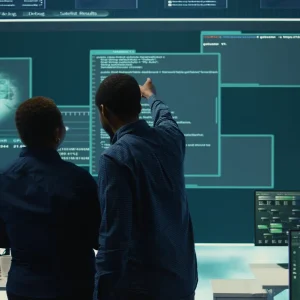IBM finally launches OS/2 2.0 for delivery at the end of year in degraded version
IBM Corp yesterday finally made its formal announcement of OS/2 version 2.0, the 32-bit release which enables MS-DOS, Windows 3.0 and 16-bit OS/2 applications to run in a single environment. Wide availability has been delayed until next March, which rumours have put down to difficulties in implementing Windows in full, or to object-oriented shortfalls. Ostensibly the late release is due to new user demands that have fed through from the massive beta test programme, involving 20,000 placements. That one of those demands was for the seamless integration of Windows, would seem to suggest that the Windows implentation is not quite what it should be just yet. In addition, users have called for support for a wider range of non-IBM hardware – boxes from nearly 50 vendors will run OS/2 2.0 by next March, IBM says, though the company didn’t say how many the system would be able to support by December, when an interim release of OS/2 2.0 will be available to those users that can’t hold out until March – essentially for testing. A 32-bit Presentation Manager graphics engine is also being demanded by users, something which will also be added by March.
Workplace Shell adds set of desk-top functions – with entertainment to the fore
OS/2 2.0 includes the drag-down, tear-off Workplace Shell object-based graphical user interface, which implements IBM’s Common User Access ’91 standard, designed to represent the user’s desktop on-screen as a single interface for managing printers, files and applications. The package includes entertainment, utilities and basic business mini-applications, such as a Calendar, NotePad, Calculator, To-Do List, Daily and Monthly Planner, and Spreadsheet are included. In addition to the OS/2 2.0 base product, IBM also announced LAN Server 2.0 and OS/2 Extended Services, including new Database Manager and Communications Manager. The LAN Requester component now will be shipped with the LAN Server product. The new OS/2 2.0 features, to be up and running by March, include Windows running side-by-side with MS-DOS and OS/2 applications on the same desktop, with the ability to cut and paste between applications; 32-bit Presentation Manager technology enabling 32-bit applications to run faster than their 16-bit counterparts; and new local net support. IBM says commitments to providing 32-bit applications have so far come from from Lotus Development Corp, Borland International Inc, WordPerfect Corp and Novell Inc. And another 500 software vendors are said to be working on some 700 32-bit applications, due to ship next year. And 250 development tools are available. OS/2 2.0 will be distributed as a single shrink-wrapped package that will run on IBM and some IBM-compatible systems with IBM service and support. A new service package for OS/2 2.0 users has also been revealed, including free 60-day support, technical information and message exchange through a bulletin board service and IBMlink electronic support. OS/2 2.0 will cost $200 in the US, UKP157 in the UK, with right to copy licences available for $150 (UKP119) without media and documentation. The price of upgrading from MS-DOS to OS/2 2.0 will be $150 (UKP117), with right to copy licences available for $100 (UKP80). IBM says it will also be expanding its authorised distribution channels in an attempt to make OS/2 2.0 more broadly available.
Extended Services for OS/2 adds enahnced database with new DB2-like version of SQL
Also announced were Extended Services for OS/2 and Extended Services with Database Server for OS/2. Distributed Database Connections Services/2, also new, connects workstation databases to host databases. The Extended Services products contain enhancements to the Database Manager and Communications Manager components which were previously available in OS/2 Extended Edition 1.3 and run under either OS/2 2.0 or OS/2 Standard Edition 1.3. Communications Manager’s new functions include integrated Advanced Peer-to-Peer Networking support for both End- and Network
-nodes, enhanced, host-based NetView administration of remote servers and workstations, and enables many Token-Ring functions to run on installed coaxial cabling. Additional new functions include the SAA Programming Interface for Communications and support for the Network Device Interface Specification, a de-facto standard for attaching network interface cards. New Database Manager functions include the addition of forward recovery, database administration tools and problem management called First Failure Support Technology/2. In addition to the existing OS/2 and MS-DOS database clients, Database Manager also supports a new NetBIOS OS/2 client and a new Windows database client. Extended Services for OS/2 is intended for use on a stand-alone workstation. Database Manager users can create databases on their own workstation, as well as use their workstation to access a remote database server on a host. IBM Extended Services with Database Server for OS/2 includes the features and functions of the stand-alone product as well as providing the Database Server function for remote clients. It also provides the new Distributed Feature which enables MS-DOS, Windows or OS/2 Database clients to run on a local net. The Database client code has also been rewritten to run faster and requires less memory. Created to complement Extended Services, IBM SAA Distributed Database Connections Services/2 is available in a single-user or a network configuration. It enables Database Manager users (and supported OS/2, MS-DOS and Windows applications) to access host relational databases conforming to IBM’s Distributed Relational Database Architecture. In addition to appropriately-configured PS/2 models, IBM says it will support Extended Services on other hardware vendor products. Generally available in April, the one-time licence fee for Extended Services for OS/2 is $600 (UKP475) and Extended Services with Database Server for OS/2 is $2,000 (UKP1,600). The Distributed Feature that provides Database Client Application Enablers costs $75 (UKP55) per client workstation. The DDCS/2 single user licence costs $500 and a multi-user licence will cost $4,680.
OS/2 LAN Server 2.0
Two new offerings of OS/2 LAN Server 2.0 – entry-level and advanced – come as an integrated package including all server functions, requesters and transport facilities. LAN Server 2.0 provides base OS/2 client support for around a third the cost of LAN Server 1.3. The Advanced package features enhanced High Performance File System, designed to exploit 80386SXs up. Response times are claimed to be up to twice as fast as on OS/2 LAN Server 1.3, when accessing files. Fault-tolerance is to the level of disk mirroring and duplexing. Both Server 2.0 products support OS/2 (1.3 and 2.0), MS-DOS and Windows clients, as well as supporting Token-Ring, Ethernet and PC Network. Either can be run with or without Extended Services. The new server products support the Network Device Interface Specification, so can support current and future NDIS-compliant local net adaptors. And a single server can link up to four departmental local nets, while a single client can participate in up to four networks, by using four adaptor cards. Uninterruptible power supply support, and new on-line references, using Presentation Manager are included and among the new management capabilities are enhanced support for OS/2 and MS-DOS diskless micros, and improved problem management, such as notifying network administrators of printer and disk storage problems. The OS/2 LAN Server 2.0 Advanced package costs $2,300 (UKP1,700) with a $75 (UKP55) per-client cost. While it supports all new OS/2 2.0 functions as clients, it requires OS/2 1.3 Standard Edition as base software for the server machine. The OS/2 LAN Server 2.0 Entry package costs $800 (UKP590) and $75 per client fee. It can use OS/2 Standard 1.3, or OS/2 2.0 as its base operating system software. For the single fee of $75 (UKP55) a client can be an OS/2 2.0, or OS/2 1.3 client; a MS-DOS 3.3 or above client; a MS-DOS Windows 3.0 client. Both ship April.






